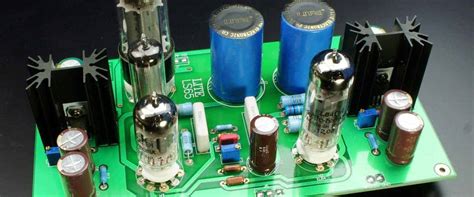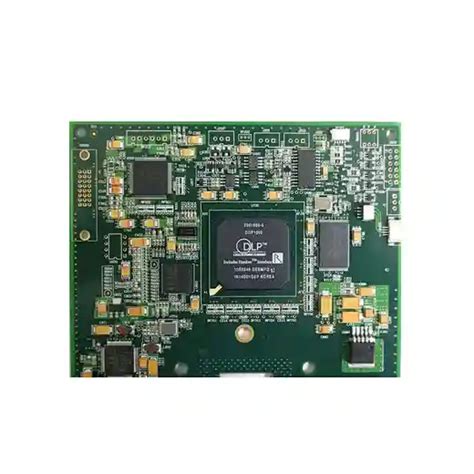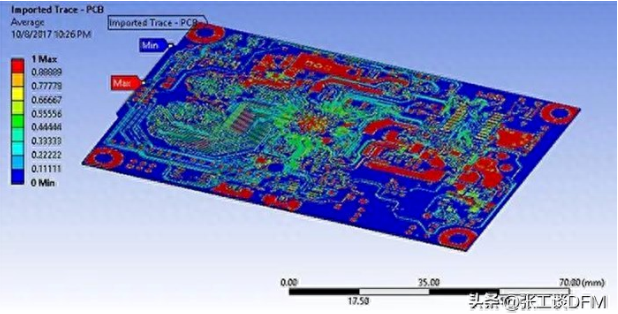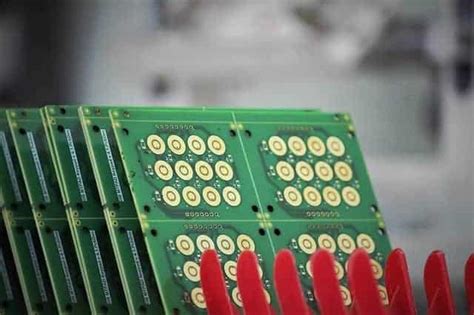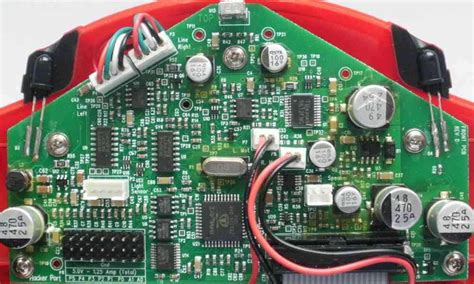Streamline Your Projects with Altium Multi Board Assembly
Key Takeaways
Altium Multi Board Assembly is a powerful tool that can significantly enhance the pcb assembly process for designers working on complex electronic systems. By utilizing this innovative platform, teams can achieve efficient collaboration that is crucial in today’s fast-paced design environment. The integration of pcba into your projects allows for streamlined workflows, reducing the time spent on project management and improving overall productivity. With its advanced features, Altium enables designers to easily manage multiple boards within a singular framework, aligning component placements and reducing errors that can arise from manual designs. This level of coordination not only enhances the design process but also ensures that teams can work seamlessly together, sharing updates and modifications in real-time. By adopting Altium Multi Board Assembly, you gain access to tools that promote efficiency and accuracy, which are essential for achieving successful outcomes in electronic design projects.
Introduction to Altium Multi Board Assembly
In the rapidly evolving field of electronics, efficiency and precision are paramount. Altium Multi Board Assembly offers a comprehensive solution for managing complex designs that involve multiple printed circuit boards (PCBs). This innovative approach not only simplifies the workflow but also enhances the overall design experience for engineers and developers.
The capability to handle pcb assembly projects with multiple boards simultaneously allows designers to maintain a cohesive view of their entire project. This integrated environment fosters better decision-making and minimizes errors caused by miscommunication between teams or during design iterations. By employing Altium Multi Board Assembly, users can streamline their design processes, ensuring that every component fits perfectly into the larger picture.
Moreover, this technology supports seamless integration across various aspects of electronic design, from schematic capture to layout and routing. When working with complex assemblies, where a device might comprise several interconnected PCBs, this tool becomes invaluable in ensuring that all components adhere to specifications while optimizing space and functionality.
To illustrate the advantages further, consider the following table outlining key features of Altium Multi Board Assembly:
| Feature | Description |
|---|---|
| Integrated Design Environment | Allows for simultaneous editing of multiple boards |
| Real-time Collaboration | Facilitates teamwork and feedback among design teams |
| Error Reduction | Minimizes miscommunication through unified workflows |
| Enhanced Visualization | Provides 3D models for better spatial understanding |
By utilizing these features, engineers can ensure that their pcba processes remain efficient and productive throughout their project life cycle, ultimately leading to successful product launches and satisfied stakeholders.
Key Features of Altium Multi Board Assembly
Altium Multi Board Assembly stands out in the realm of PCB assembly with its robust set of features designed to cater to the complex needs of electronic designers. One of the primary advantages is its capability to facilitate seamless integration across multiple boards. With this functionality, designers can manage multiple circuit boards simultaneously, reducing the likelihood of errors and inconsistencies that often occur in traditional PCBA environments. Additionally, real-time collaboration tools allow design teams to work together efficiently, making adjustments on the fly which significantly enhances team productivity.
Another notable feature is the ability to handle intricate layouts and components without sacrificing clarity. This is particularly beneficial when dealing with multi-layer boards that require precise alignment and synchronization between components. Furthermore, Altium provides advanced simulation tools that allow teams to test and validate their designs before moving on to production, reducing costly mistakes later in the assembly process.
“The ability to manage complex assemblies with ease transforms not only how you design, but also how efficiently you can bring your products to market.”
By leveraging these features, designers can streamline their projects from initial concept through production, ensuring a more organized workflow that leads to timely deliveries and improved overall project outcomes. Utilizing Altium’s tools effectively can elevate your PCB assembly process and foster better collaboration among design teams while navigating through intricate electronic designs.
Benefits of Adopting Multi Board Assembly in Your Projects
Adopting Multi Board Assembly in your projects offers a myriad of advantages that can profoundly impact both efficiency and overall project quality. One primary benefit is the reduction of assembly time, as pcb assembly processes are optimized to handle multiple boards simultaneously. This integrated approach not only cuts down on labor costs but also minimizes the risk of errors that often arise from handling individual boards separately. Furthermore, leveraging pcba tools within a multi board framework enhances the synchronization between various design elements, allowing for a seamless workflow. This synergistic benefit extends to material management as well; Multi Board Assembly typically leads to better material utilization and can result in cost savings due to bulk procurement efficiencies. Additionally, as teams collaborate on complex electronic designs, the clarity and cohesion provided by Multi Board Assembly streamline communication, allowing for faster decision-making and problem resolution. Ultimately, embracing this technique not only elevates project outcomes but also allows teams to innovate more freely by focusing on integrating design aspects rather than getting bogged down in assembly logistics.
Streamlining Design Workflow with Altium
The integration of Altium Multi Board Assembly into your design workflow can significantly enhance productivity and streamline various processes associated with PCB assembly. By utilizing multiboard designs, engineers can visualize the entire assembly in a cohesive manner, allowing for better management of complex electronic schematics. This is particularly beneficial when working on large projects that involve multiple layers and components, where the intricacies of connectivity can pose challenges. The software’s robust features enable designers to conduct simultaneous editing, which facilitates efficient modifications and quicker decision-making. Additionally, the implementation of collaboration tools within Altium ensures that teams can share insights and updates in real-time, fostering a cohesive approach to PCBA. In a world where time-to-market is crucial, streamlining your design workflow with Altium Multi Board Assembly helps mitigate errors and reduce overall development time, ultimately leading to more successful project completion and innovation within electronic designs.
Enhancing Collaboration Among Design Teams
Effective collaboration among design teams is crucial for the success of any electronic project, especially when dealing with multi board assembly processes. The Altium Multi Board Assembly tool facilitates this collaboration by allowing team members to work on different aspects of the project simultaneously. With features that enable real-time updates and integrated communication channels, teams can quickly share insights, feedback, and updates related to their PCB assembly efforts. This effectively breaks down silos that often exist in design workflows. Moreover, the streamlined management of PCBA components through a centralized platform not only enhances clarity but also minimizes errors that can arise from miscommunication or outdated information. As each team member contributes their expertise, they collectively work towards a unified vision while ensuring seamless integration for complex electronic designs. By harnessing these collaborative tools, design teams can achieve greater efficiency and innovation throughout the entire development cycle.
Tips for Effective Integration of Multi Board Projects
Integrating multiple boards in a design can present both challenges and opportunities. To enhance the pcb assembly process, it is crucial to establish a structured approach. Start by ensuring that all team members are on the same page regarding project goals and specifications. Utilizing Altium Multi Board Assembly makes it significantly easier to manage various components while providing clear visualization of intricate connections. This aids in identifying potential design conflicts early on, which can save valuable time.
Moreover, leveraging version control within your pcba process streamlines collaboration among design teams, making it easier to track changes and maintain design integrity. Regular communication, supplemented by integrated feedback mechanisms within the Altium environment, further enhances collaboration and helps address any hurdles that arise during the integration phase. Finally, be mindful of optimizing your layout to facilitate efficient signal routing and power distribution, which are critical in complex electronic designs. By adopting these practices, teams can ensure a smooth integration process and maximize the benefits of multi board assembly in their projects.
Case Studies: Success Stories with Altium Multi Board Assembly
In recent years, numerous organizations have successfully leveraged Altium Multi Board Assembly to enhance their project outcomes. One notable example is a tech startup that faced challenges in managing multiple PCB designs for their innovative product. By adopting the multi board assembly approach, they streamlined their design workflow, allowing teams to collaborate more efficiently. This integration led to a significant reduction in development time and unnecessary revisions. Furthermore, another case study highlights a large electronics manufacturer that implemented pcba processes facilitated by Altium software. They reported a 30% decrease in assembly errors and improved tracking of design changes across various boards. The flexible framework offered by Altium Multi Board Assembly not only ensured stringent quality control but also fostered better communication between hardware and software teams, ultimately enabling them to bring products to market more swiftly. These success stories underline the transformative power of pcb assembly methodologies in modern electronic design processes, showcasing how strategic implementation can lead to tangible benefits for a range of projects within diverse industries.
Conclusion: Elevate Your Electronic Design Process
In today’s rapidly evolving electronic design landscape, integrating Altium Multi Board Assembly into your workflow can significantly elevate your project outcomes. By utilizing this advanced tool, designers can streamline not just the design but also the pcb assembly process, ensuring that complex projects are managed with greater efficiency. Enhanced features like multilayer layout management and advanced simulation capabilities allow teams to visualize interactions between different pcba elements before physical assembly. This proactive approach minimizes errors and reduces development time, ultimately saving costs. Moreover, the collaborative capabilities foster a seamless interaction among design teams, ensuring that all members are aligned throughout the product development lifecycle. As you adopt the Altium Multi Board Assembly, you equip your design processes with robustness and flexibility, paving the way for future innovations in electronic design.
Conclusion: Elevate Your Electronic Design Process
Incorporating Altium Multi Board Assembly into your workflow is a pivotal step toward optimizing your PCB assembly processes. The ability to manage multiple boards simultaneously fosters greater efficiency and accuracy, allowing design teams to envision and execute complex electronic projects seamlessly. By leveraging advanced features such as real-time collaboration tools and integrated design verification, teams can minimize errors and accelerate product timelines. The shift from traditional PCBA methods to a more streamlined approach not only enhances productivity but also promotes innovation within engineering teams. This holistic perspective not only simplifies the assembly process but also ensures that final products align with both original design intent and manufacturing best practices. Ultimately, embracing the features of Altium Multi Board Assembly can significantly elevate your electronic design process, paving the way for more sophisticated and successful outcomes.
FAQs
What is Altium Multi Board Assembly?
Altium Multi Board Assembly is a powerful tool designed to enhance the PCB assembly process by allowing designers to work on multiple boards in a cohesive manner, ensuring efficient layout and design management.
How does Altium Multi Board Assembly improve collaboration?
By providing a unified platform for PCBA, Altium Multi Board Assembly facilitates better communication and collaboration among design teams, enabling real-time updates and seamless integration of various components and boards.
What are the key features of Altium Multi Board Assembly?
Key features include support for advanced design workflows, version control, real-time collaboration tools, and integrated resource management that collectively streamline the design process for complex electronic projects.
Can Altium Multi Board Assembly handle large projects?
Yes, it is specifically designed to manage large-scale projects by optimizing PCB assembly processes, allowing teams to work more efficiently across multiple board designs without losing track of individual components.
What benefits can I expect from adopting this tool?
Adopting Altium Multi Board Assembly can lead to reduced time-to-market, improved accuracy in designs, enhanced team collaboration, and overall better management of project workflows in electronic design.

